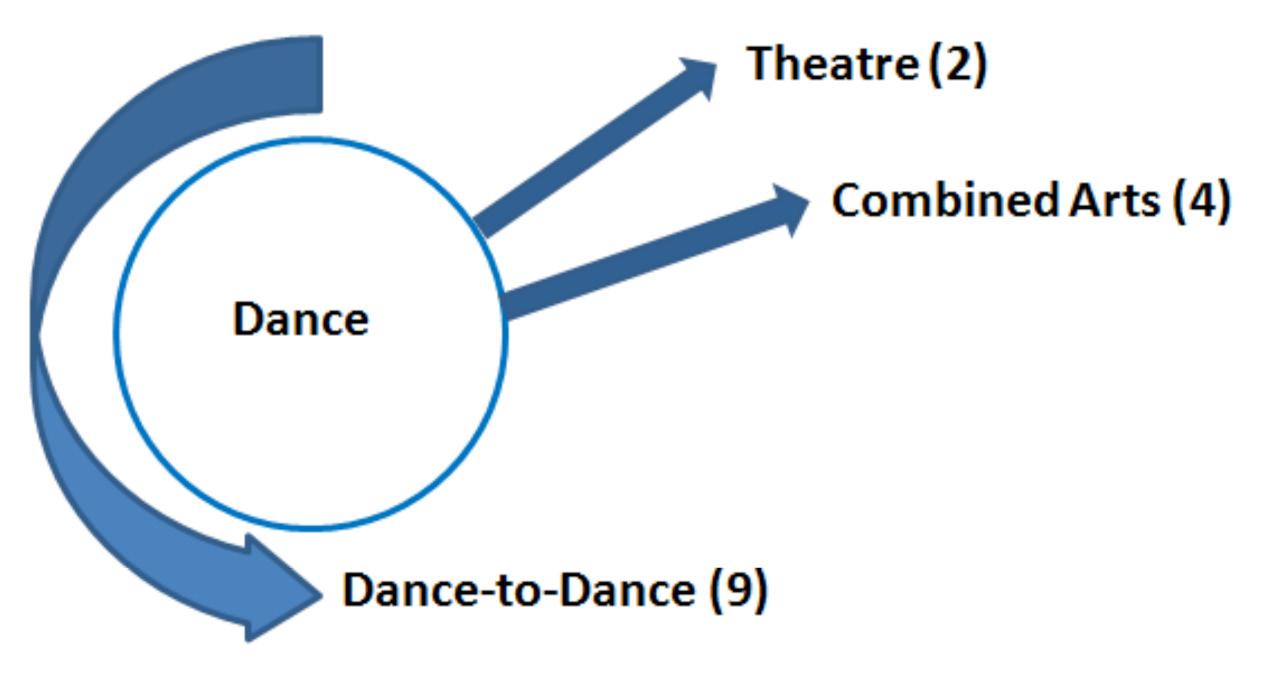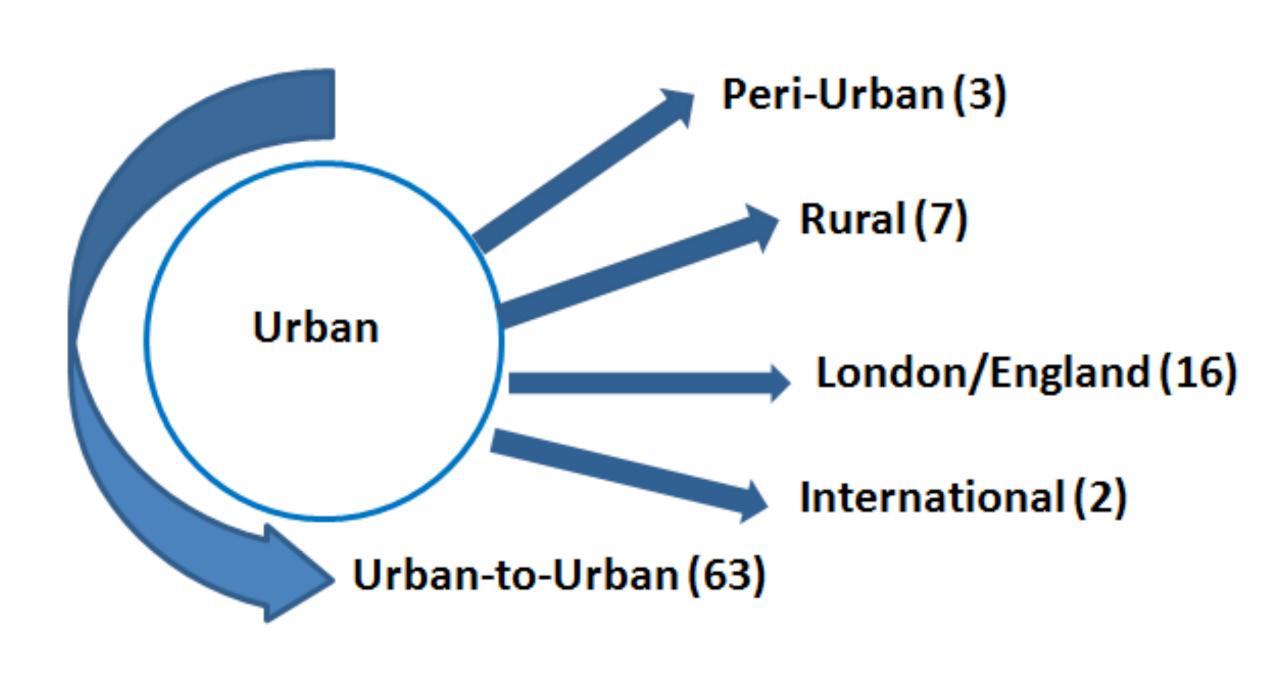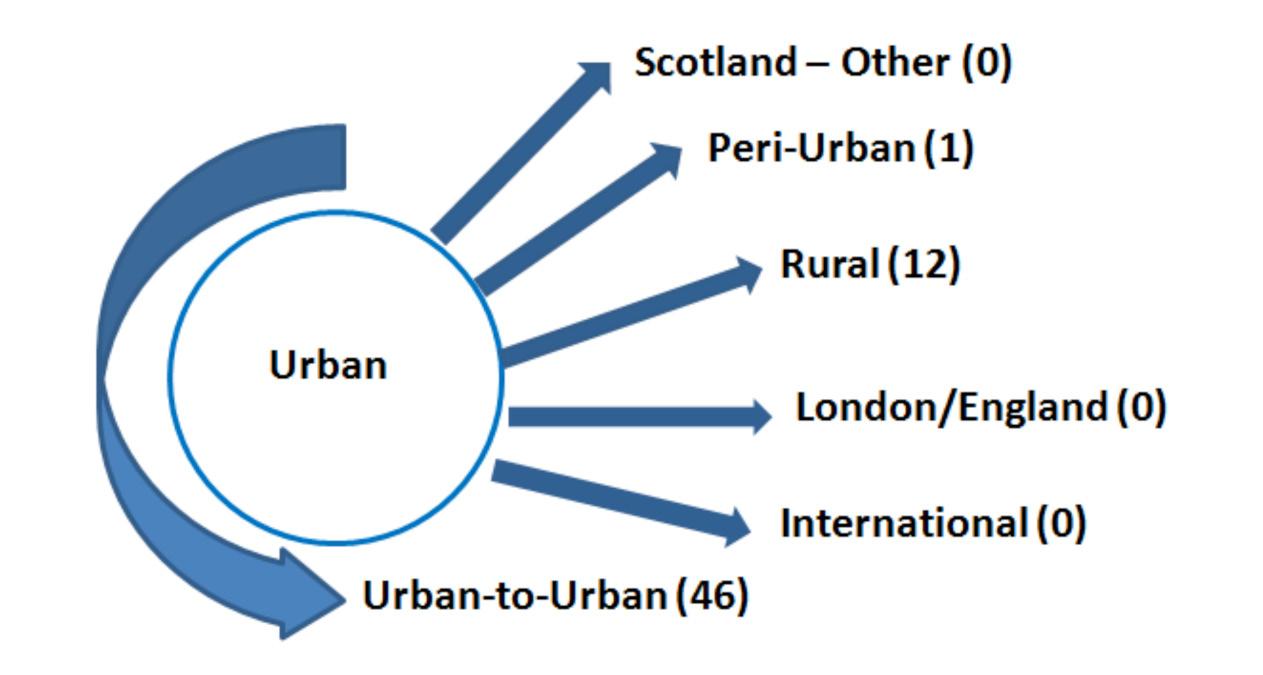
10 minute read
Nurturing collaborations
3 COLLABORATION
3.1 As described in Table 1, the evaluation team drew upon a wide range of quantitative and qualitative data sources to assess outcomes against the theme of collaboration. Strategic interviews and a research symposium (see Appendix 2 for detail on method) focused on the role of Creative Scotland and other strategic partners (including other funders) in facilitating greater collaboration in the way the Programme was conceived and delivered. Scottish survey returns from LOCOG’s UK-wide evaluation and from the UWS online survey were also utilised. Other available information, in the form of Creative Scotland Managed Fund applications and End of Project reports, were also used to inform the findings presented in this chapter.
Advertisement
The objectives set out in Table 1 have been grouped in to key themes: - Nurturing collaborations - Legacy for the cultural sector; and - Stronger international cultural networks.
Nurturing collaborations
3.2
3.3
3.4
3.5 As discussed in Chapter 2, the strategic environment in which Creative Scotland worked during the London 2012 Games necessitated the proactive nurturing of collaborations. In part there was a strategic imperative with nearly two thirds (65%) of the total £14 million budget for the Programme originating from partnership funding (£9 million), from a range of governmental, non-governmental and cultural agencies.
Crucially, the Creative Programmer for Scotland, and Creative Scotland’s 2012-2014 team, integrated a diverse set of programmes, projects and organisational activity to create a coherent cultural programme. Relationships between strategic stakeholders were deepened as a result of the intense working relationships forged in the lead up to the Games, especially in the final year when the London 2012 Festival provided a focal point for activity. Specifically:
- Creative Scotland’s relationship with LOCOG was strong, particularly as the London 2012 Festival Director and the Creative Programmer for Scotland worked closely on decisions about which Scottish projects were to be included in the London 2012 Festival programme. - Existing national-level relationships were strengthened by joint working and new ones formed. For example, EventScotland was an important partner funder of the Programme and they worked closely with Creative Scotland and the Edinburgh Festivals (through Festivals Edinburgh) to lever funding, secure greater national and international profile and maximise future impacts for 2014.
Alongside this national-level collaboration, there was a parallel ambition to ensure that collaborations took place within and between projects and that these would be sustainable where appropriate.
Before presenting findings on the extent of new partnership formation, it is necessary to outline some methodological limitations. The most important of these relates to the interpretation of ‘new’ partners within reporting. For example, some relationships formed during projects were described as connections as opposed to partnerships. Furthermore, some partnerships will come to a natural end because the Programme was a once in a lifetime, one-off celebration. For those continuing, it is also difficult to evaluate the success of partnerships only months after the end of the Programme. Finally, more attention needs to be paid to assess the deepening of existing partnerships rather than finding new ones, emphasising that the quality of relationships is what leads to more sustained collaborative work.
3.6 3.7 3.8 Nevertheless, data produced via the UWS online survey and the UK Evaluation Survey provide support for the claim that new partnerships were formed and some of these will continue into the future. The main data source on new partnership formation was the UWS online survey. The data generated provided valuable insights into the likelihood of project impacts within, and outside of, the cultural sector. A total of 249 new partnerships were reported as an outcome of involvement in the funding programmes which made up the Programme. Though the majority of new partnerships formed were in the cultural and arts sectors (n=147) a significant number of new partnerships were also reported with other sectors (n=102), suggesting that projects were forging partnerships to maximise impact (see Figure 1).
Figure 1: Partnerships with other sectors
Food and Drink Source: UWS online survey (base 47 projects) Although on average each project forged new partnerships with 3 new arts and cultural organisations and 2 ‘other’ organisations, a few of the larger projects produced the most significant number of new partnerships. For example, four projects identified in excess of 20 partners in their UK Evaluation Survey responses. Some projects with a Scotland-wide or UK remit have partnered with a large number of organisations as a feature of their creative brief.
Looking at partnership data by sector of origin or ‘artform’, the findings suggest that more partnerships were formed through theatre projects as well as those involving combined art forms (Table 2).
Table 2: New partners, by sector
Visual Arts (2) Combined Arts (12) Comedy (1) Dance (4) Film (2) Museums and Heritage (1) Theatre (including performance) (3) Music (7) Literature (including books) (1) Non-artform specific (4)
Total
Number of New Partners Sector (number of projects)
in Arts Sectors in Other Sectors 14 13 51 47 6 10 15 1 10 0 3 10 20 5 12 1 0 0 16 15
147 102
Source: UWS online survey (base 47 projects)
3.9 3.10 The UWS online survey data also suggests that the majority of new partnership formation occurred within sectors, rather than across sectors. For example, there is evidence to suggest that concentrations of new partnerships were forged within visual arts, dance, theatre, film, and music, rather than, for example, visual arts with other sectors. Figures 2 and 3 illustrate sector-to-sector relationships for the two most active partnership forming artforms, theatre and dance. This finding can be interpreted in two ways. It can be viewed as evidence of cultural programming consolidating expertise and concentrating impact within the specific sectors, but might also be taken as a missed opportunity for cross-sector engagement and impact. In the longer-term, this might suggest that the impacts of similar funding programmes will primarily be beneficial within specific sub-sectors rather than across the cultural and creative industries as a whole.
Figure 2: New cultural partnerships - theatre sector
Source: UWS online survey

Figure 3: New cultural partnerships – dance sector

Source: UWS online survey It is also important to consider the nature of projects and their original objectives as these determine whether new partnerships are formed within and outside of defined artforms. For example, NVA’s Speed of Light was conceived as a sport/art fusion and so was successful at reaching out to new partners in sport and physical activity. Facilitating relationships outside of defined artforms needs to be built into the objectives of projects (and the cultural programme) if this is an important criterion for assessing success in future cultural programmes.
3.11 3.12 Geographically (see Table 3), projects based in the large urban centres of Edinburgh and Glasgow produced the most new partnerships, explained partially by the disproportionate number of respondents based in these two cities (47% of participants were based in either Edinburgh or Glasgow, producing 121 new partnerships). On average each project based in Glasgow and Edinburgh produced 3.8 new cultural partnerships and a further 3 partnerships in other sectors. Projects based in Glasgow appear to have been especially productive in forging new partnerships, producing 92 new partners overall, or 37% of all new partners, whereas in Edinburgh, there appears to be fewer ‘new’ partnerships. Most of these projects were Edinburgh Festival-related and are already well-connected to local partners. The research symposium and strategic interviews highlighted that strong relationships were already formed, especially those brought about by Festivals Edinburgh’s strategic approach to bringing festival directors together to work on London 2012 themes.
Table 3: New partners, by project location
Edinburgh Glasgow Inverness Loch Lomond London Mull Paisley St Andrews Stirling Taunton Dundee Shetland (blank)
Number of New Partners Project Base
28 1 44 48 6 1 6 10 19 21 1 0 10 7 4 3 12 11 2 0 3 0 10 0 2 0
in Arts Sectors in Other Sectors Total
147 102
Source: UWS online survey (base 47 projects) Analysing partnership data spatially, it is noticeable that urban areas feature prominently as a location of the activity. Half of the new partnership activity, both in cultural/arts and other sectors was based in Scotland’s largest cities and involved city to city partnerships. Similarly, the majority of England-based projects looked to develop new partnerships with cultural and arts organisations based in Scotland’s largest cities. This reflects the density and diversity of cultural organisations in urban conurbations within the central corridor in Scotland. Figure 4 illustrates the spatial nature of new cultural partnerships and Figure 5 partnerships with other sectors.
3.13 3.14
Figure 4: New cultural partnerships – urban projects

Source: UWS online survey

Figure 5: New other partnerships – urban projects
Source: UWS online survey By comparison, the number of cultural and arts partnerships developed in rural and other geographical areas appears to be small. This is expressed most clearly by the finding that no rural projects established new partnerships within other rural areas; the majority were with English and other UK-based organisations. The findings also suggest that new partnerships reported outside Scotland have been small-scale. While there are examples of Scotland to England relationships, there are considerably fewer with Wales and Northern Ireland, and with international partners, which may raise concerns about the ability to achieve international impact from funded programmes where this is an objective.
While reported international partnerships were low, this is partly due to limitations associated with reporting, faced by the UWS online survey and the UK Evaluation Survey. Further qualitative investigations, using End of Project Reports, the UWS authored case studies and commissioned project evaluations paint a more optimistic picture of international connections, relationships and partnerships. For example, the Edinburgh Writer’s Conference connected with writers from across the world who attended in person and have subsequently hosted satellite events in their own countries. Edinburgh Fringe Congress attracted Festival Fringe counterparts from across the world to Edinburgh, which will lead to extensive knowledge sharing in the future. It is also important to emphasise that the Programme included a mix of local, national and internationally-focused activities and, therefore, many projects were not expected to demonstrate international reach.
3.15 3.16 3.17
Table 4: New partners, by spatial unit
Spatial Relationship (Base to New Partner Location)
Urban-to-Urban Urban-to-Urban/Rural Urban-to-Rural Urban-to-England/London Urban-to-International Urban-to-All Scotland
Rural-to-Urban Rural-to-Rural Rural-to-Urban/Rural Rural-to-England Rural-to-UK: Other
England-to-Urban England-to-Urban/Rural England-to-Rural England-to-England/UK Cannot identify partner location
Total Number of New Partners in Arts Sectors in Other Sectors
63 (49.6%) 3 (2.4% 7 (5.5%) 16 (12.6%) 2 (1.6%) 0
3 (2.4%) 0 1 (0.78%) 10 (7.8%) 2 (1.57%)
12 (9.4%) 0 6 (4.7%) 2 (1.5%) 18 (12.2%) 46 (45%) 1 (0.98%) 12 (11.7%) 5 (4.9%) 0 0
3 (2.9%) 1 (0.98%) 1 (0.98%) 5 (4.9%) 0
4 (3.9%) 0 14 (13.7%) 1 (0.9%) 9 (8.8%)
Total
147 102
Source: UWS online survey (base 47 projects) The partnership formation data in Table 4 suggests that there is a relationship between urban project and urban partner, whereby urban projects tend to form partnerships with other urban projects and organisations. This is particularly pronounced in Glasgow and Edinburgh, which showed a tendency for ‘Glasgow to Glasgow’ partnerships and ‘Edinburgh to Edinburgh’ partnerships respectively. If, looking forward to Glasgow 2014, there is a need for a wider spatial spread of impacts then commissioning activity should be cognisant of this finding and seek to avoid a concentration of activity in the main urban centres.
The focus to date has been on the quantity of new partnerships. In terms of sustainable partnerships, 83% of respondents to the UWS online survey indicated that they would work with their identified partners again, and participants in the research symposium were optimistic about continuing relationships with many of these. Whilst securing a partnership legacy was an objective of the Programme, many projects were designed to be one-off occurrences and continuation was not a measure of their success. However, the creation of new relationships that could lead to new thinking, greater reach and cross-sectoral working was a valuable outcome from the Programme.
In summary, the data presented here indicates that the Programme has made a positive contribution towards nurturing collaborations, both at a strategic level and through project partnership formation. However, it is not necessarily the case that nurturing collaborations is easy and unproblematic or that these are, or should be, sustainable. Collaborations need time, trust and understanding on both sides if they are to be productive, whether continuation is an ambition or not. More longitudinal work also needs to be undertaken to assess whether partnerships formed as an outcome of the Programme were sustained and in what form.







